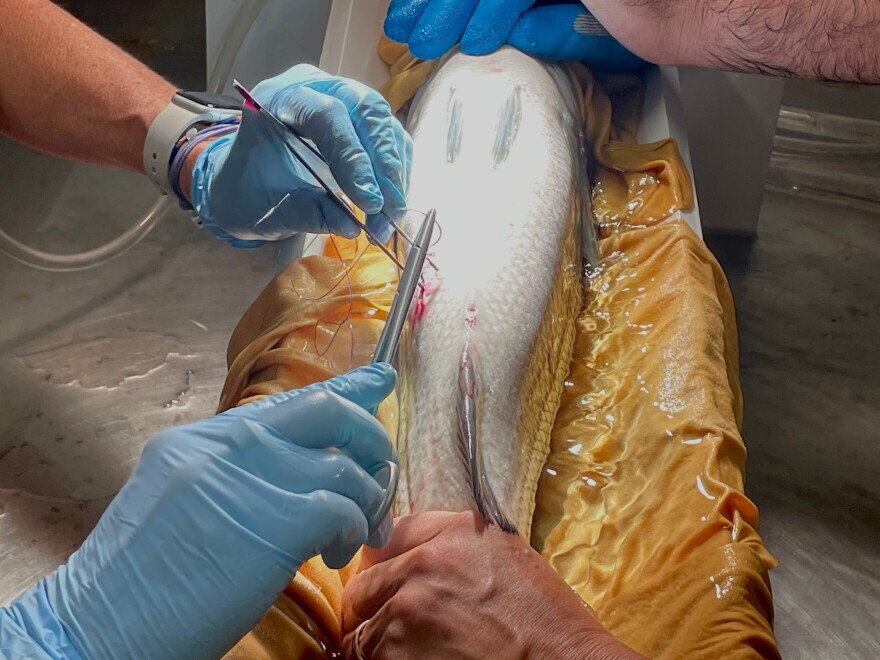The secret lives of striped bass: scientists study a unique population of the ‘golden retrievers’ of the sea

Veterinarian Lisa Abbo of the Marine Biological Laboratory in Woods Hole, Mass., stitches up a striped bass after inserting a 3-inch-long black tracker inside its stomach. (Eve Zuckoff/CAI)
How much anesthesia does it take to put a fish under before surgery?
It’s not a question most veterinarians have to answer, but it’s what Lisa Abbo was trying to figure out at the Marine Biological Laboratory in Woods Hole, Mass., as she looked down at a striped bass on a steel operating table.
“We want him or her to be out enough to be able to do the procedure and have the fish not feel as much, but we also don’t want to have the animal go too deep,” Abbo said. “So we’re kind of weighing that fine line.”
The fish, almost three feet long, with silvery scales and eight olive-colored stripes lengthwise along its body, occasionally tried to wiggle away as she made a short incision on its belly. Once she cut through the muscle, she inserted a 3-inch-long, black transmitter inside its stomach. The device will allow scientists to receive a signal telling them when a striper enters and leaves a coastal pond in Woods Hole.
So, what was going through her head during the procedure?
“Uh, don’t mess up,” she said with a laugh. “All the organs and everything are kind of pushed up there. So I’m just trying to be gentle.”
This salt-water pond in Woods Hole village has become something of a summer resort for a group of three to four dozen striped bass. The fish that come year after year seeking shelter and a steady supply of food are a delight for visitors who’ve come to know them.
But for biologist Steve Zottoli, they began to represent more: a unique opportunity to understand why stripers do what they do in the wild.
For the rest of this story, including audio, please visit CapeandIslands.org.
